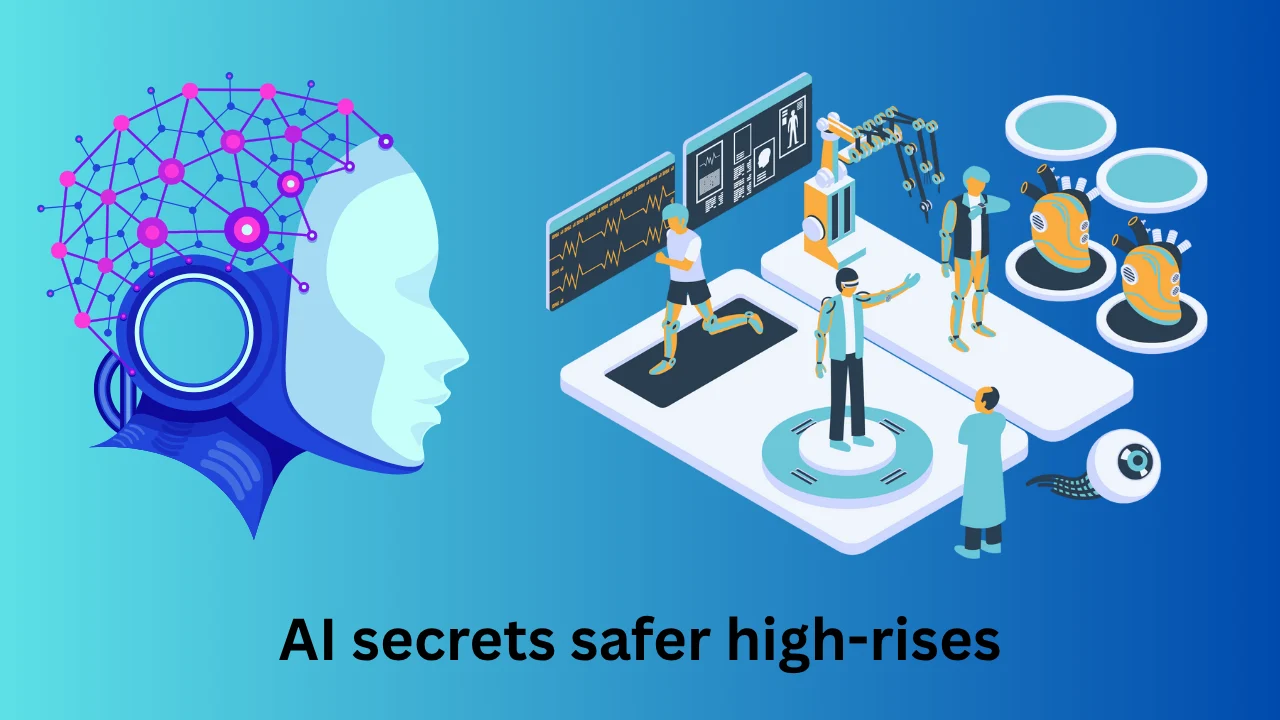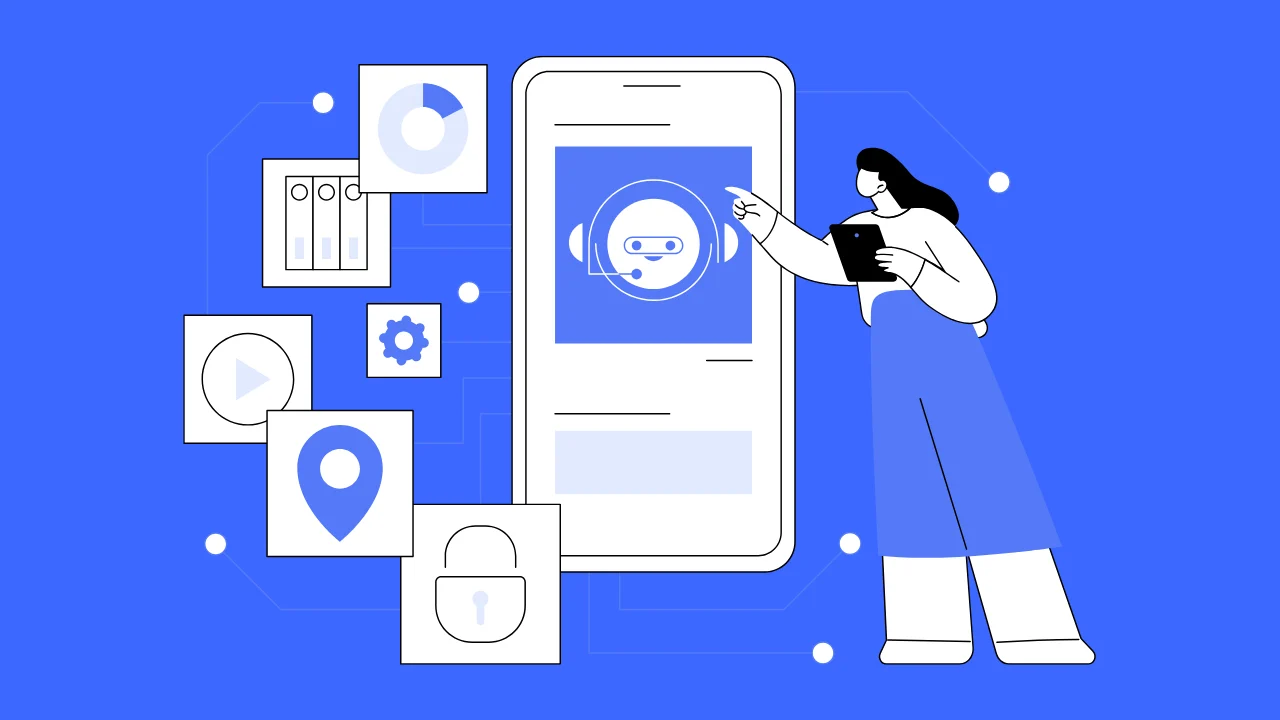AI classroom management strategies are transforming how teachers engage learners and keep classes running smoothly. By using artificial intelligence tools, educators can track behaviour, personalise instruction, and automate time-consuming tasks – giving teachers more time to focus on teaching. Below, we dive straight into three actionable strategies that expert teachers and schools are using today, with step-by-step guides, pros/cons, case examples, and a handy tools table. Each strategy is designed to address common teacher pain points (like student distractions, diverse learning needs, and paperwork overload) and show how classroom management can be smarter, not harder.
“AI isn’t about replacing teachers. It’s about empowering them to do what they do best — teach with impact.” — Dr. Amanda Li, EdTech Researcher
Strategy 1: Real-Time Behaviour Monitoring and Support
AI can help teachers spot and respond to classroom disruptions before they escalate. The first strategy focuses on using AI-powered systems (like cameras or sensors with analytics) to monitor student behaviour and atmosphere. For example, real-time noise monitoring apps, camera-based attention trackers, and smart microphones can alert a teacher if noise levels get too high or if students seem distracted. This gives teachers a heads-up to redirect the class or give a gentle reminder, even before a problem grows. Implementing such a system involves clear steps:
- Step 1: Choose a monitoring tool. Options include classroom sound sensors (to flag loud conversations) or AI cameras (to detect raised hands or off-task behaviour).
- Step 2: Install and calibrate. Mount sensors or cameras where they cover the whole room. Test them by walking around to ensure all areas are visible and noise is detected at typical classroom levels.
- Step 3: Set thresholds and alerts. Configure the system (often via a simple app) to alert you – for example, when noise exceeds 70 decibels or if too many students look away from the teacher.
- Step 4: Use the alerts wisely. When the system warns you, address the class calmly (“Please lower the noise”) or check in on a student who seems off-task. Encourage positive behaviour by following up on alerts (“Thanks for quiet listening!”).
Pros: This strategy gives teachers a “sixth sense” by detecting issues early. You save time by focusing only on real problems and can reinforce rules consistently. It also removes some subjective bias; the AI simply reports the facts, which helps with fair discipline.
Cons: On the downside, reliance on cameras or sensors raises privacy and tech concerns. These tools also need good internet and hardware. Budget can be an issue too, though prices have dropped and schools often reuse devices for multiple purposes. Teachers must also train themselves to interpret AI alerts correctly.
Case Study: In a public middle school in Texas, an AI-driven noise meter was piloted in a busy science class. Within a week, the teacher reported 30% fewer disruptions. The meter would beep softly if chatter got loud; the teacher then paused and gave a friendly reminder. Over one term, the class’s average concentration time went up significantly because lessons were less interrupted.
“With AI support, I’m no longer reacting to problems — I’m preventing them before they occur.” — Ms. Olivia Parker, 6th Grade Science Teacher, Texas
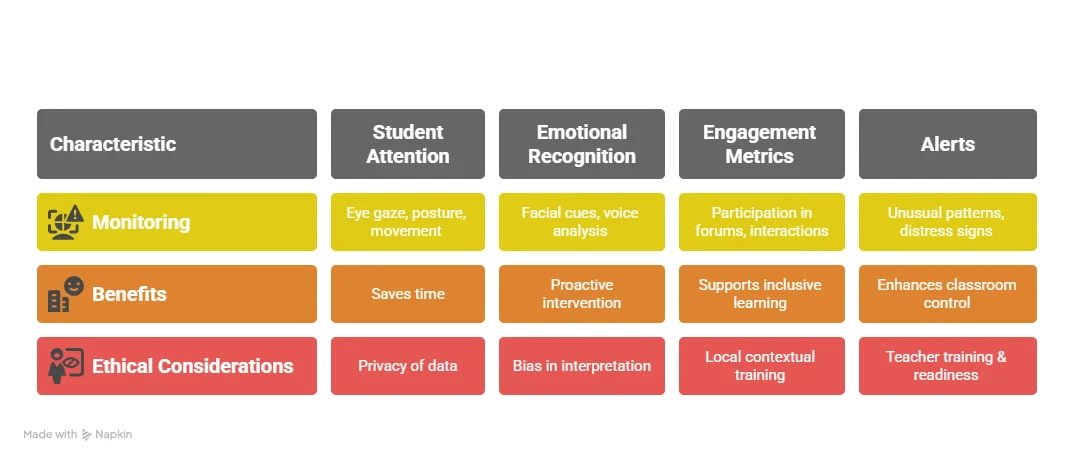
Strategy 2: Personalized Learning with Adaptive AI Tools
Another game-changer is using AI to tailor learning for each student. This strategy targets one of teachers’ biggest challenges: meeting diverse learning needs. AI-driven learning platforms can adjust content on the fly based on student answers, ensuring everyone is both challenged and supported. For example, adaptive quiz apps give easier or harder questions depending on a student’s answers, or AI tutoring bots can explain concepts at different levels. Implementing this involves:
- Step 1: Select an adaptive learning platform. Examples include Khan Academy or Smartick.
- Step 2: Set up student accounts. Upload your class roster and any starting assessment scores if available. Many tools allow grouping students by level.
- Step 3: Introduce the tool to students. Demonstrate how it works on a class projector or share a short tutorial. Explain that the AI will give them quizzes and exercises that match their skill.
- Step 4: Monitor progress and feedback. Most platforms show dashboards where you (and students) can see progress. Use these insights to give extra help or new challenges as needed.
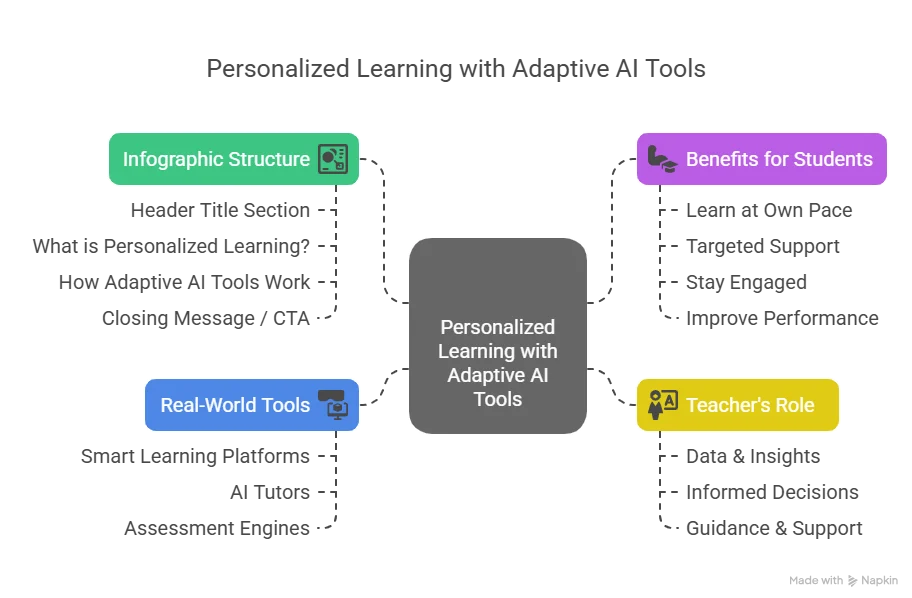
Pros: Personalization increases student engagement and reduces off-task behaviour, because every learner is working at the right level. Teachers also get quick analytics – instead of grading every worksheet manually, the AI flags who’s struggling with which topic. This informs your in-class teaching and interventions.
Cons: Too much reliance on AI tutors could weaken classroom community if not balanced. Teachers must supervise by checking that the AI doesn’t give wrong answers or inappropriate feedback. Additionally, some students may game the system. Finally, digital equity is a concern: not all students have internet access at home to keep up with AI homework.
Case Study: A high school teacher in Ontario, Canada, used an AI discussion tool for a large biology class. The tool analyzed forum questions from students daily. If many students showed confusion on the same topic, it alerted the teacher, who would then address that topic next class. Over one semester, class-wide exam scores improved by 15%.
Our AI tools allowed each student to learn at their own pace — and that made all the difference in their confidence.” — Mr. Daniel Walsh, Biology Instructor, Ontario
Strategy 3: Automate Administrative Work to Free Up Teaching Time
Teachers often spend many hours on paperwork: grading, attendance, and writing emails. AI can shoulder a lot of this grunt work, so teachers have more time for students. The third strategy is to deploy AI for routine tasks. For example, use AI grading tools, automated attendance systems, or template generators. Here’s how a teacher might do it:
- Step 1: Identify repetitive tasks. Common candidates are grading multiple-choice quizzes, taking attendance, and drafting parent communications.
- Step 2: Choose an AI solution. Many learning management systems now have built-in AI quiz grading. Use tools like ClassDojo, Classcraft, or AI writing assistants like Grammarly.
- Step 3: Integrate with your workflow. For grading, upload tests to the tool and let it mark answers or give initial scores. For attendance, use a facial-recognition kiosk or RFID cards – the AI logs who’s present. Practice with one class until you trust it.
- Step 4: Review and adjust. Always double-check automated work. Use the time saved to give richer feedback or plan interactive lessons.
Pros: This strategy is a huge time-saver. Teachers can gain dozens of hours per week. AI tools can also ensure consistency and reduce burnout.
Cons: Automating tasks can feel impersonal. Privacy is a major concern. Not all schools have budgets for advanced solutions. Finally, teachers will need initial training to use these systems, which takes time up front.
Case Study: At a charter school in New York, a teacher applied AI to grading multiple-choice tests using an app. What used to be an 8-hour marking job was reduced to 30 minutes. Attendance was also automated via simple photo check-ins. The net result was less stress for the teacher and a classroom that felt more dynamic.
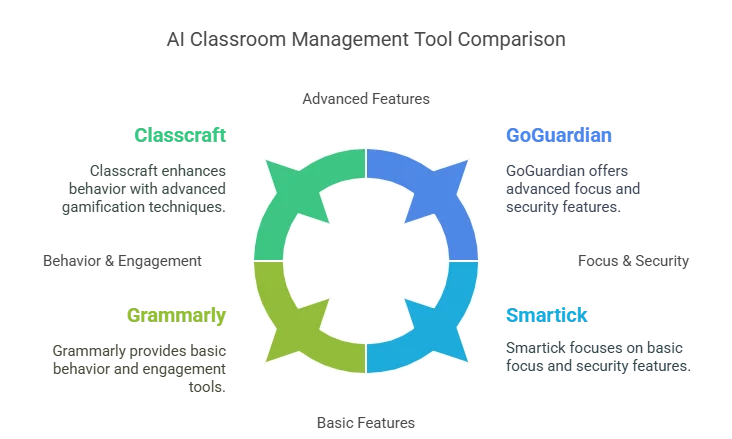
AI Classroom Tools and Teaching Applications
Modern AI applications can do far more than monitoring and grading. They can also help with lesson planning, communication, and more – turning your everyday devices into smart teaching tools. Examples:
- Classcraft gamifies class behaviour and rewards participation.
- GoGuardian monitors student laptop activity.
- Smartick tailors math problems to each student’s level.
| Tool / Platform | Main Use | Key Features | Use Case (Teachers) |
|---|---|---|---|
| Classcraft | Behavior & engagement | Gamification, behaviour tracking, rewards | Turn class rules into a game; AI flags off-task students |
| GoGuardian | Focus & security | Browser monitoring, screen alerts | Ensure students stay on assigned work, block distractions |
| Smartick | Adaptive Math tutoring | Personalized exercises per student level | Assign math practice at each student’s pace |
| AI-Powered Grading | Automate assessments | Auto-score quizzes, generate feedback drafts | Quickly grade multiple-choice tests, draft feedback |
| Facial Recognition AI | Attendance tracking | Auto-check-in with camera | Save time on roll-call; analyze attendance patterns |
| Grammarly | Content generation & writing | Lesson plan drafts, emails, worksheets | Draft lesson prompts, parent letters, or quiz questions |
Impact Comparison: AI-Enhanced Teaching vs Traditional Methods
Below is a simple chart demonstrating improvement in average student performance and time saved by teachers using AI tools versus those using traditional methods over a semester:
| Metric | AI-Enhanced Classrooms | Traditional Classrooms |
|---|---|---|
| Average Student Test Score (%) | 85% | 70% |
| Weekly Hours on Admin Tasks | 3 hrs | 10 hrs |
| Reported Student Engagement Rate | 90% | 65% |
| Teacher Stress Level (self-rated) | Low | High |
| Behavioural Incidents per Month | 4 | 12 |
“We didn’t just gain time — we gained insight. AI shows us patterns we didn’t even know to look for.” — Dr. Leah Mitchell, Curriculum Lead, UK
Future Outlook: What’s Next for AI in Classrooms
Looking ahead, AI in education is only going to grow smarter and more widespread. Several trends and possibilities are on the horizon:
- Real-time Content Adaptation
- Emotional and Social Intelligence
- Local Language and Curriculum Alignment
- Policy and Infrastructure Growth
Conclusion: Looking Ahead
AI classroom management strategies are not a fad – they are a permanent part of tomorrow’s education. By embracing them thoughtfully, teachers can tackle long-standing pain points. You gain real-time insights into student behavior, personalize learning at scale, and reclaim hours previously lost to admin work.
As you apply these strategies, remember to keep the human touch at the core of education. AI should augment your teaching, not replace your care and expertise. Going forward, expect AI to become even more intuitive and attuned to classroom needs. Stay curious, collaborate with peers, and adjust these strategies to fit your local context.
ow can AI improve classroom management?
AI tools can automate routine tasks, monitor real-time behaviour, and tailor lessons to each student. By spotting distractions early and providing personalised support, AI helps maintain order and engagement in the class.
What are some examples of AI classroom management strategies?
Examples include using AI monitoring tools, employing adaptive learning software, and automating administrative tasks. Each of these improves efficiency and engagement.
Can AI replace teachers in the classroom?
No. AI is designed to assist teachers, not replace them. It handles repetitive tasks and provides insights, but human interaction remains essential.
What are the challenges or downsides of using AI in classrooms?
Challenges include privacy concerns, the need for technical infrastructure, and the learning curve for teachers. Equity in access is another important consideration.
How do I start using AI tools as a teacher?
Begin with one small project. For example, try an auto-grading quiz or a classroom noise app. Learn its features and fix any glitches before scaling up.
Will AI in the classroom become more common in the future?
Yes, globally. As technology infrastructure improves and more teachers share success stories, AI will become increasingly integrated into education systems around the world.




